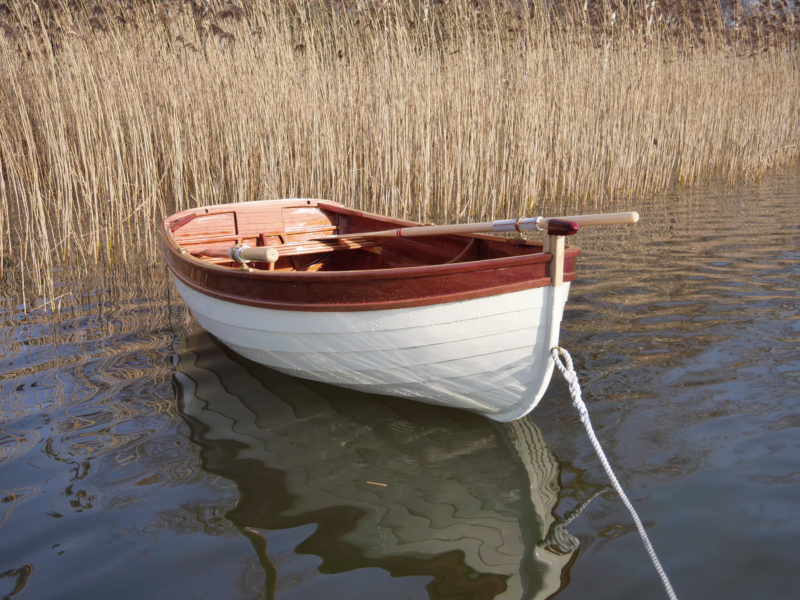
The dinghy sits lightly on the water but has enough volume to carry a complement of three. The horizontal projection at the stem head provides a handhold for pulling the tender up on the mothership’s deck.
Ernst Glas takes his family on summer cruises on the Baltic Sea aboard RONDINE, a 43′ sloop his father built in the early ’90s. He’d had a rather disagreeable tender for the yacht, too heavy to haul up on deck and powered with a rather unreliable two-stroke outboard that required “a lot of begging and praying.” He sold the tender, but his young son Tristan missed the boat and pleaded with his father for a new dinghy.
Ernst struck a deal with Tristan: they would get a new dinghy, but they would do as Grandfather did and build it of wood, themselves. Tristan agreed, on the condition that the dinghy would have a motor. The two went looking for a design, something easily rowed and capable of taking an outboard. Ernst was drawn to prams, but Tristan insisted that a fast boat must have a sharp bow.
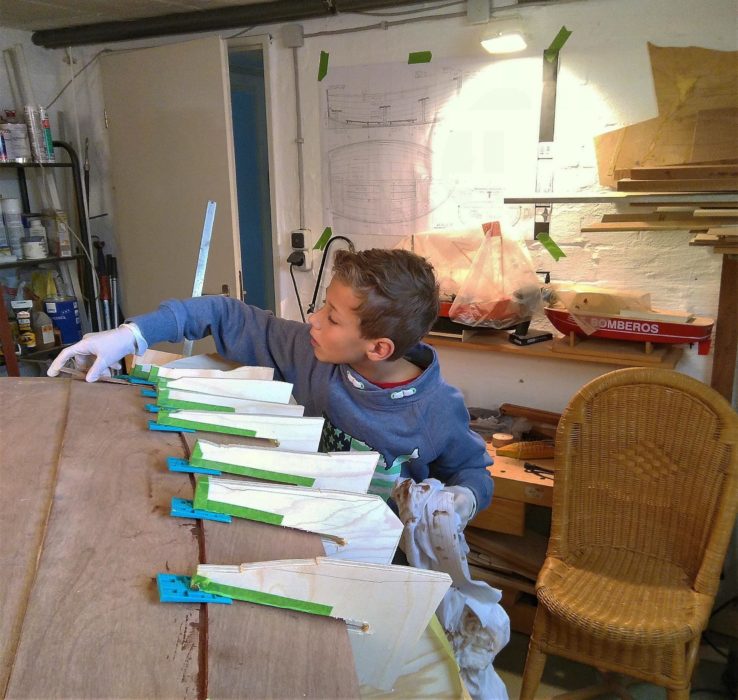 Photographs courtesy of the Glas family
Photographs courtesy of the Glas familyTristan often pitched in on the construction. Here he’s cleaning up excess thickened epoxy after a plank has been secured in place with homemade plywood clamps and wedges.
They settled on Iain Oughtred’s 7’ 2” Auklet. Its 3′ 11″ beam and full-bodied hull would be able to carry the family of three and their gear to and from RONDINE, and its glued-plywood lapstrake construction, bringing the dinghy’s weight to just 50 lbs, would make it easy enough to pull up on the sloop’s foredeck.
The plans arrived at the end of the summer of 2017, and Ernst and Tristan had agreed to start the construction that fall, after the summer sailing season. But, “when the plans arrived,” noted Ernst, “something strange happened to us. Something forced us to start immediately.” Ernst ordered 4mm mahogany plywood for the planking and ash lumber for the longitudinals. He already had some 3cm mahogany, leftovers from work on RONDINE, that would make a nice transom.
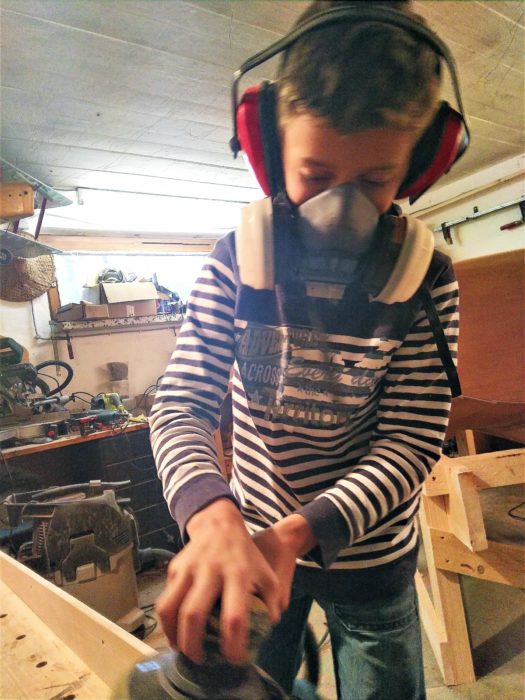
Sanding can be a tedious chore, but Tristan suited up and did his fair share.
The glued-lapstrake method was new to Ernst, but “all in all it was not so difficult, because every small step is quite easy if given enough time.” The vicissitudes of life had made 2017 a particularly challenging year for Ernst, but working in his small workshop, sometimes with his son, sometimes alone with only classical music from company, had a curative effect. “I tried to do everything very slowly, to concentrate on each small step and find a kind of center for me in the music, the wood, and the tools. These were lucky hours.”
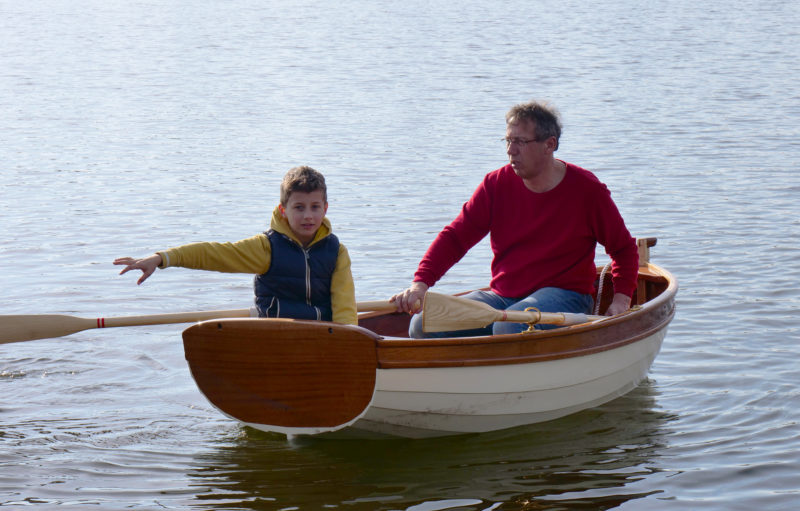
Father Ernst and son Tristan take the Auklet out for a spin under oars.
Ernst and Tristan finished the dinghy in February, “quite proud about our work.” A warm spell in early March cleared the ice from the small lake near their village and they launched their Auklet. Ernst found the dinghy easy to row and fast for its length. A few weeks later they returned to the lake with an electric outboard. Tristan took the helm and the two motored around the whole lake.
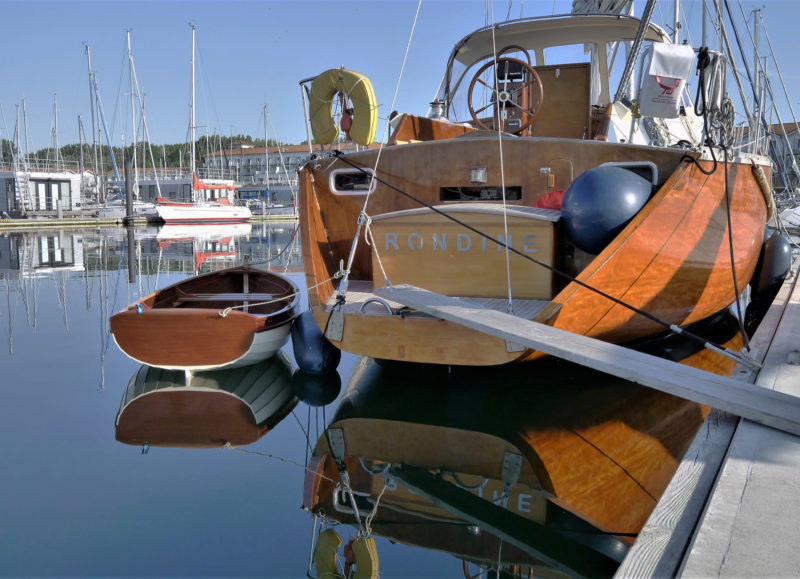
The Auklet is an worthy tender to RONDINE, the 43′ sloop built by Ernst’s father.
The Auklet that Ernst and Tristan built now rests on the foredeck of the boat Grandfather built, ready for the sailing journeys of the coming summer. It has yet to be christened but it already has its place in the hearts of a father and a son. It can wait for a name.![]()
Have you recently launched a boat? Please email us. We’d like to hear about it and share your story with other Small Boats Monthly readers.


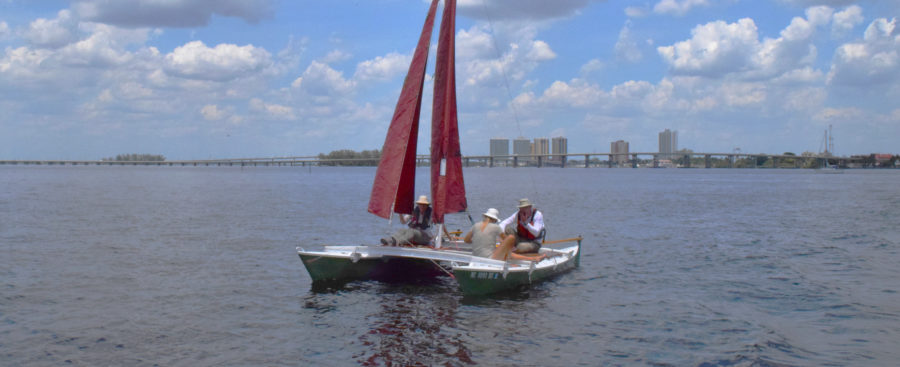
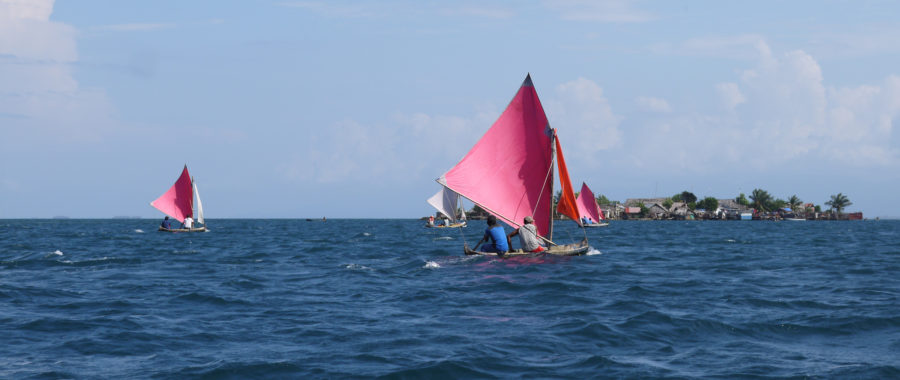
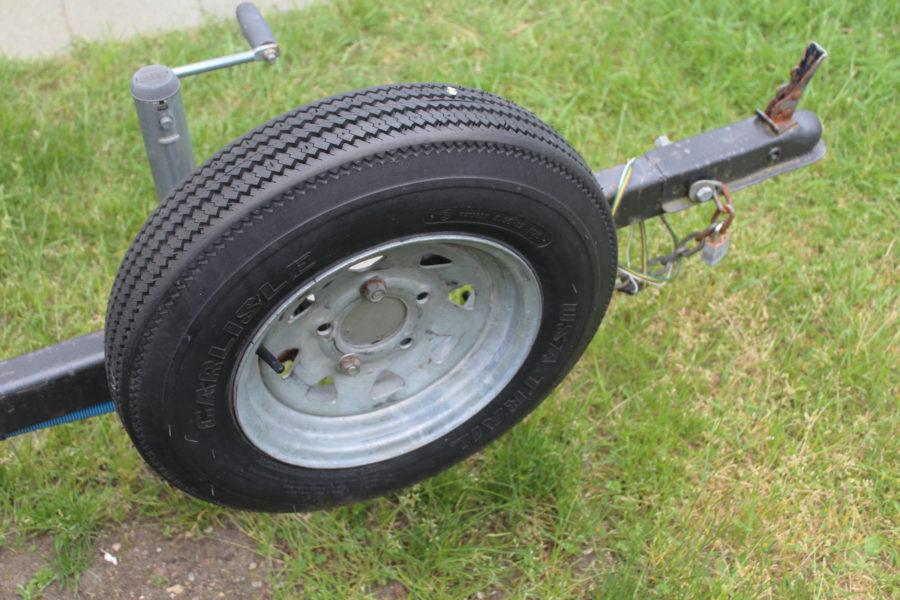
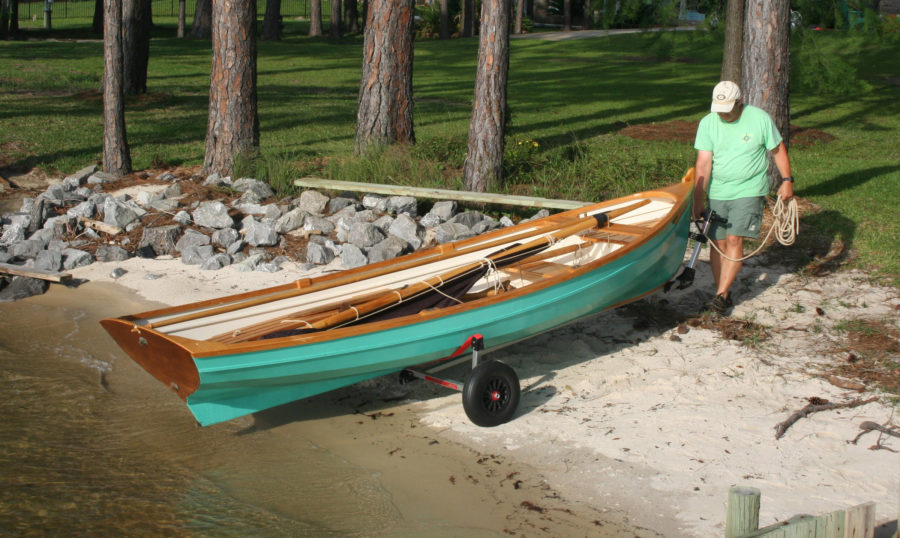

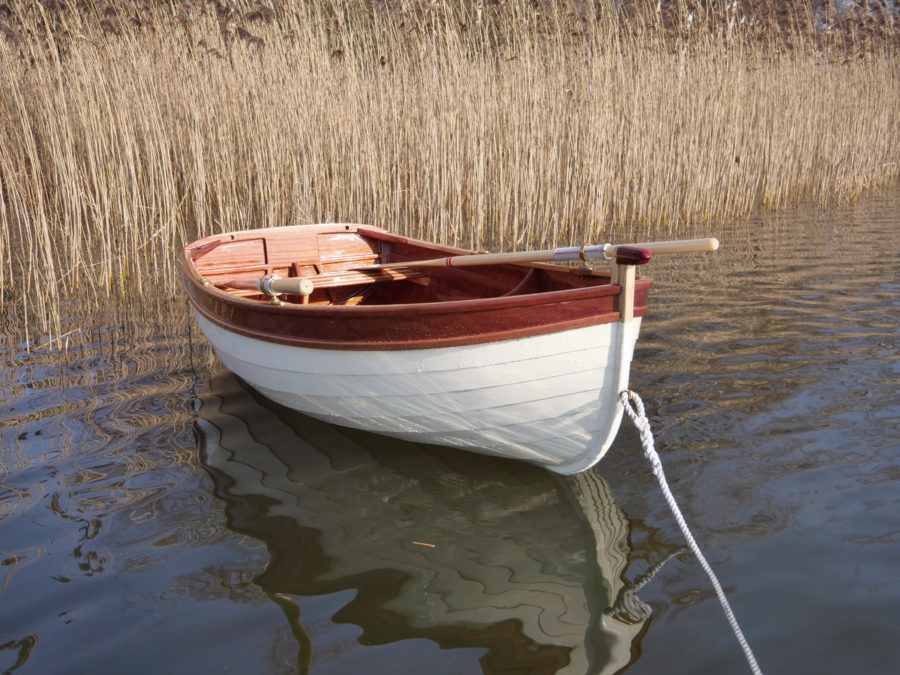
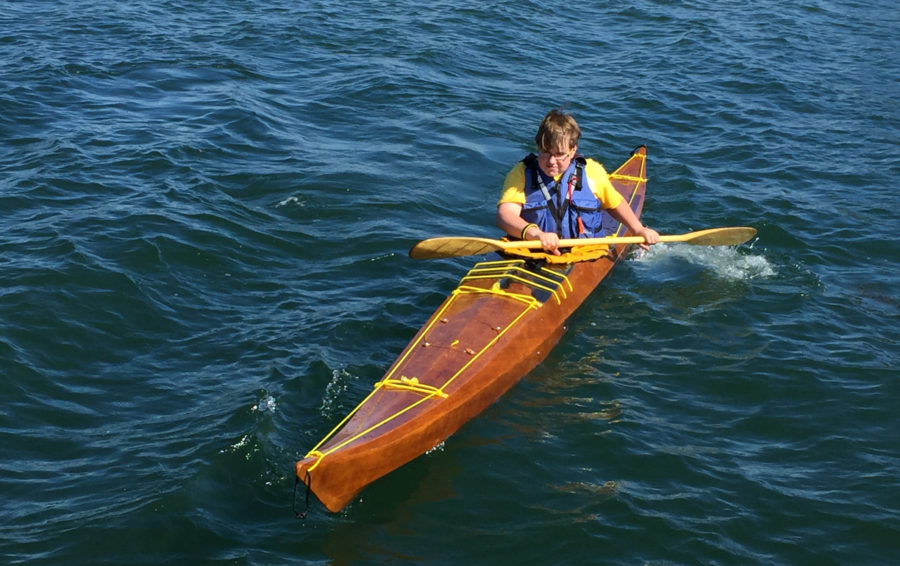
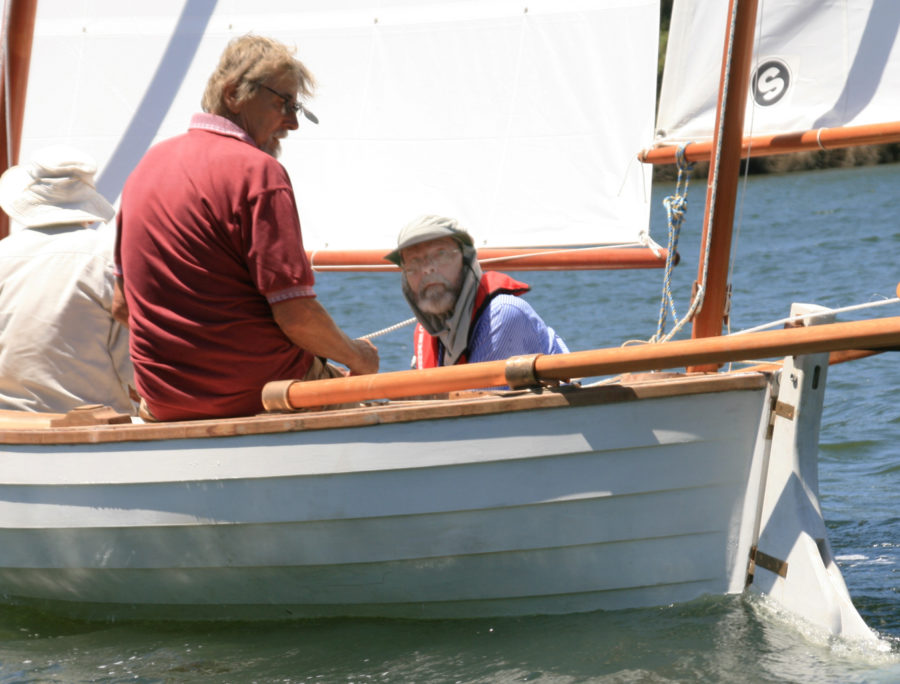
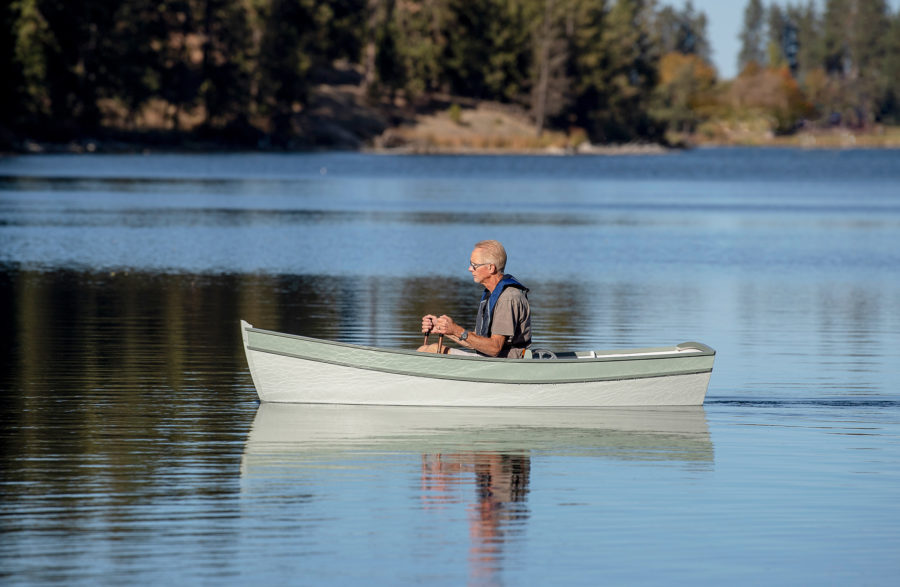

What sort of outboard is shown? Where does one buy one? Boat looks great. I have built a number of Oughtred designs and they are all first rate.
Hi Robert,
Many thanks. That engine is an Aquamot electric outboard with 1600w power. It is an Austrian product, known for its quality. The boat is overpowered with that Engine. Hull speed is reached with 50% power, approximately. So, the smaller one 1000W would be enough, I guess. The rear part of the head is the lithium-ion battery with 640 Wh.
It is an Austrian-built electric outboard from the company called Aquamot. This comment is naturally also from an Austrian and I am building an AD14 sail boat and hopefully will also be able to afford an Aquamot outboard.